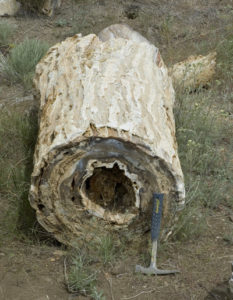Background

The Columbia River Basalts are a series of very fluid flood basalts that erupted from volcanic vents in the area of southeastern Washington, northeastern Oregon, and southwestern Idaho. The lava flowed across the Columbia Basin and ultimately reached the Pacific Ocean. These eruptions occurred between 17.5 and 6 million years ago, with the majority of the lava erupting during the first two million years of the cycle (Tolan, et al, 1989). The extent of these eruptions was enormous – the lavas covered an area of approximately 164,000 km2 (63,320 mi2), with a total volume of approximately 174,000 km3 (41,745 mi3) (Tolan, et al, 1989). Recent work has attributed the source of the lavas to a mantle plume associated with a volcanic hotspot that is the source of current volcanic activity at Yellowstone National Park (Camp, 1995; Camp & Ross, 2004).
Click to view a chart showing simplified Columbia River Basalt stratigraphy.

